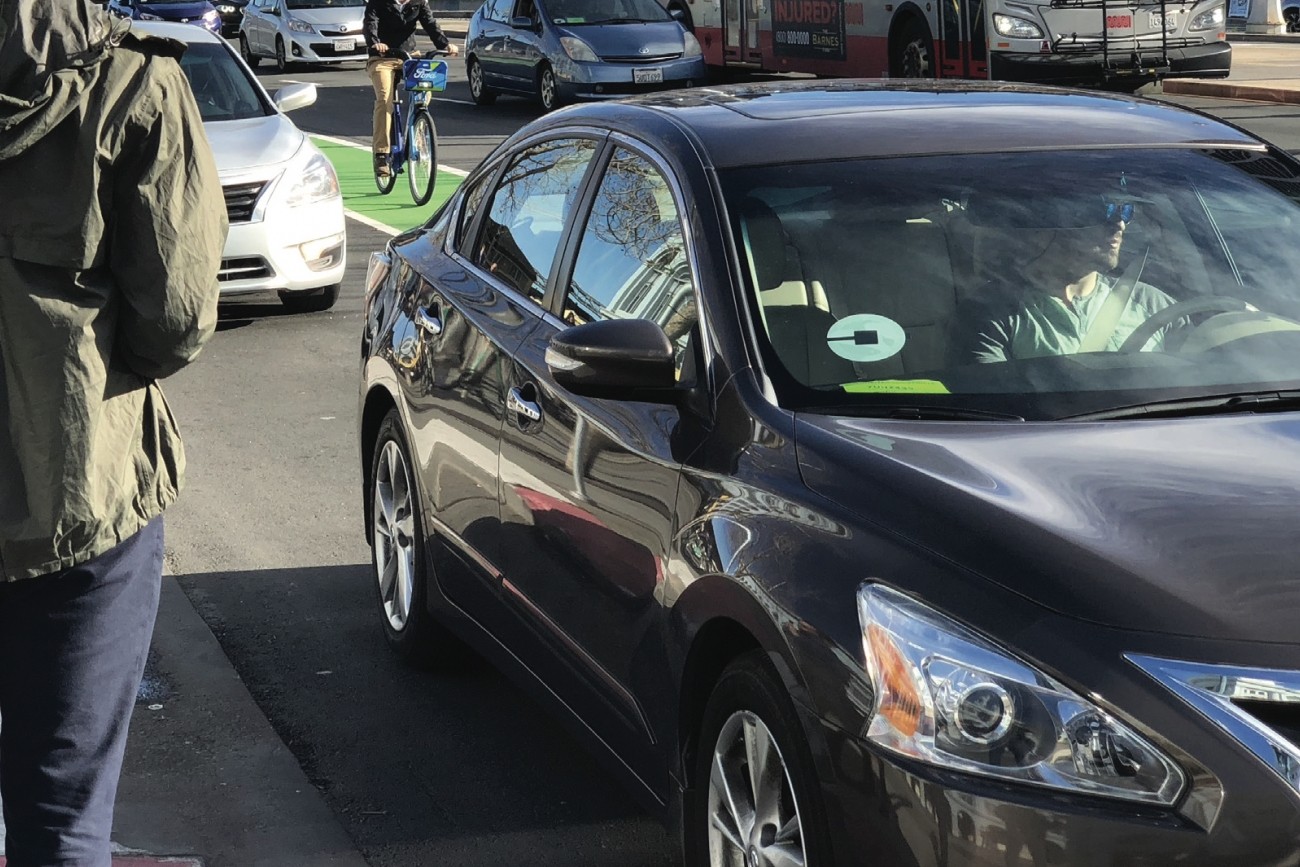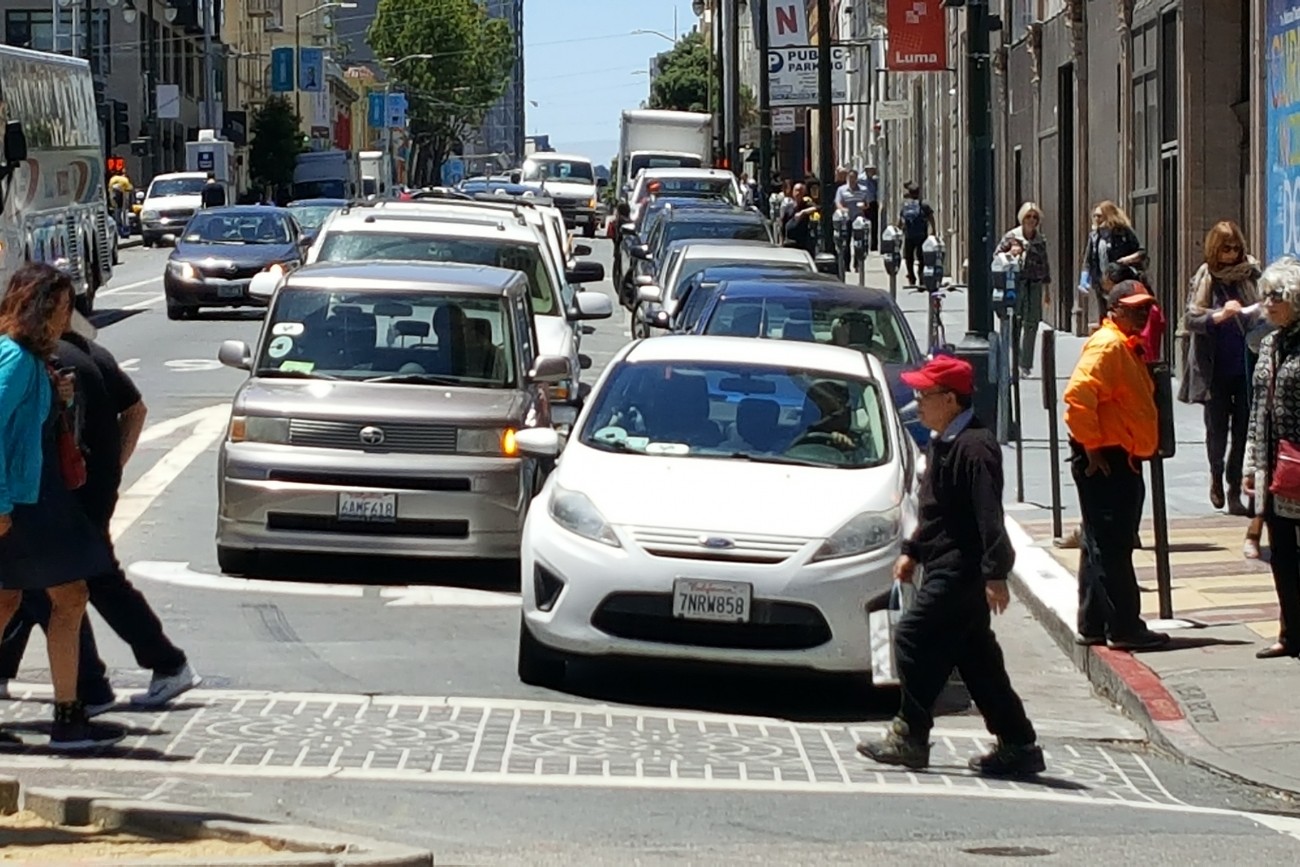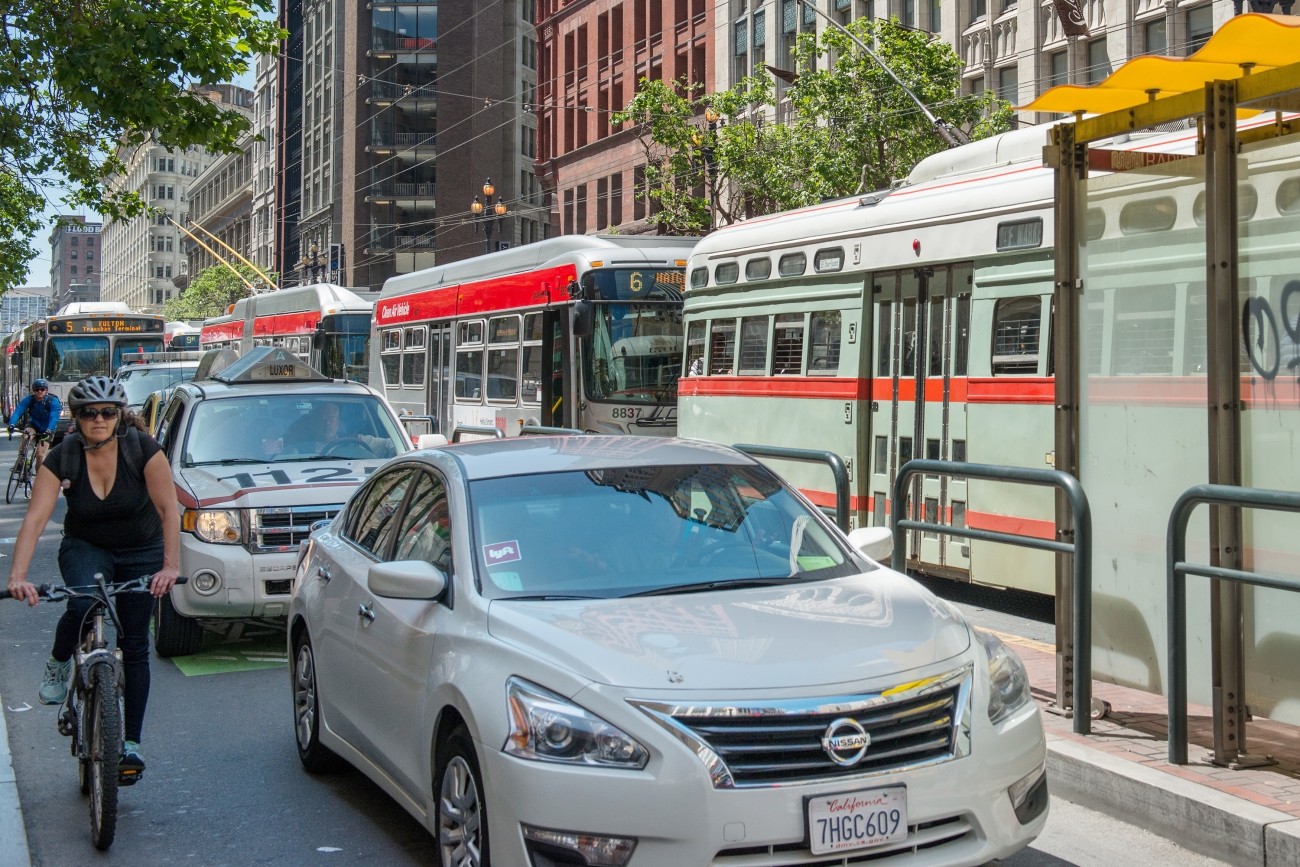
Introduction
The Transportation Authority’s Emerging Mobility Evaluation Report provides the first comprehensive look at the rapidly evolving emerging mobility sector in San Francisco.
The report outlines the range of services operating in San Francisco, covering everything from ride-hail services to autonomous vehicles and microtransit to scooter sharing.
In the report, the Transportation Authority evaluates how these services and technologies align with the city’s 10 Guiding Principles related to collaboration, safety, transit, congestion, sustainability, equitable access, accountability, labor, disabled access, and financial impact.
Read the press release
Resources
Executive Summary: Emerging Mobility Evaluation Report, 2018 (PDF)
Final Report: Emerging Mobility Evaluation Report, 2018 (PDF)
Contact
Report Findings
Pilots and permits lead to better performance
Companies that have performed pilots with San Francisco public agencies have provided data and experience that has informed development of permit systems for those mobility types. The resulting permit systems for bike share, scooter share, and microtransit have guided these mobility types to be more aligned with the 10 Guiding Principles. There are opportunities to strengthen and harmonize the various permit programs. In addition, the city does not yet have a standardized process to proactively conduct pilots and incorporate innovative service types and new companies into the city’s permitting and planning systems.
Inadequate data
The city does not have adequate data from enough emerging mobility companies to fully evaluate how well emerging mobility services are aligned with our Guiding Principles. Other researchers have produced important studies and findings about some emerging mobility services, but more traveler trip data and surveys are needed to characterize San Francisco travel markets and individual traveller choices.
Opportunities for equitable access
Many emerging mobility services are available during late-night hours, on weekends, and/or in areas less well covered by public transit. This may provide opportunities to increase mobility for people with disabilities and increase access for people underserved by public transit.
Conflicts with public transit
San Francisco is a Transit-First city, but inadequate data means we do not have comprehensive information on how the emerging mobility sector is impacting transit ridership or our capital investments. While some services play a useful first/last-mile connection role, no emerging mobility companies have implemented design features or policies that our methodology identified as directly supportive of transit.
Impacts on safety
With the exception of Microtransit providers, operator training is inconsistent among emerging mobility services; almost no providers test operators following training. As a consequence, many services may exhibit roadway conflicts at curbs, in transit-priority lanes and on sidewalks—all of which may have significant impacts, particularly on vulnerable roadways users. Additionally, many emerging mobility services may contribute to distracted driving, which also decreases roadway safety.
Impacts on congestion
Because we have inadequate data, we do not fully understand how this sector is impacting travel mode choice behavior and congestion. We do know that many emerging mobility services rely on city rights-of-way and curbs. The city and the emerging mobility companies have not consistently coordinated to develop a robust curb management approach. Other researchers have found mixed impacts. For ride-hailing in particular, our TNCs Today study found that ride-hail vehicles in San Francisco are concentrated during times of day and neighborhoods of the city where traffic is most congested. A UC Davis study found that adoption of ride-hailing is likely to result in a net increase in vehicle miles traveled due to competition with public transit. Other studies have found that users of other mobility services chose to drive personal vehicles less frequently.
Recommendations
Partner: Proactively Partner
The SFMTA and the Transportation Authority should develop a framework for emerging mobility pilots that considers this study’s evaluation results and encourages the city to proactively partner with companies to develop innovative solutions to address unmet city transportation needs. This framework should consider partnerships with transportation companies, employers, developers, and civic and neighborhood organizations.
Measure: Collect Emerging Mobility Data and Conduct Research
San Francisco public agencies should develop a data reporting and warehouse strategy to coordinate and consolidate existing data streams. Additionally, the city should employ a travel decision study to understand travel behavior. Such a study could be combined with a mobile application pilot that studies traveler choices and factors that inform them.
Regulate: Regulate and Recover Costs
The SFMTA should harmonize existing permit programs related to emerging mobility and create a framework for new services. The emerging mobility permit program should administer a permit fee that considers the full cost to plan for and regulate these services. Similarly, the city should seek regulatory and/or impact fees to mitigate effects these services have on safety, city resources and investments, as warranted by research studies. The permit must also require a standard set of data necessary to conduct ongoing evaluation of these services and include standards for equitable provision of services to underserved areas and to people with disabilities.
Bridge: Bridge Mobility and Access Gaps
The city should develop a user study to more clearly understand who uses emerging mobility services and for what purposes. This study should focus on equity gaps for low-income users and issues related to disabled access. The SFMTA and the Transportation Authority should also develop pilots to fill mobility and access gaps, such as for paratransit, late night transportation, school-related transportation, and in areas less well-covered by public transit.
Prioritize: Support and Prioritize Public Transit
The Transportation Authority and the SFMTA should continue to support the expansion of transit-priority facilities. The Transportation Authority and the SFMTA should collaborate in developing a series of studies related to rights-of-way prioritization, vehicle miles traveled, financial impacts, and cost-recovery. To support these studies, the Transportation Authority and the SFMTA should conduct pilot programs that improve first and last mile connectivity to transit stations.
Enforce: Enforce Safe Streets
The SFMTA and the Police Department should increase enforcement of known emerging mobility conflict areas throughout the city and consider piloting enforcement blitzes to encourage safe operation. Similarly, they should seek legislative authority and implement a pilot that automates enforcement to promote safety, ensure more systematic adherence to traffic rules, and reduce enforcement costs. The SFMTA should also develop a Vision Zero study that studies collision rate trends and unsafe operations, determines whether there is a correlation with emerging mobility services, and identifies recommendations to reduce traffic fatalities.
Price: Manage Congestion at Curbs and on City Roadways
The SFMTA and the Transportation Authority should prioritize developing a curb management strategy that allocates and prices curb access appropriately. Such a strategy should be supported by curb management pilots with emerging mobility services and through a curb management prioritization study. The SFMTA should also develop and implement an emerging mobility streets design guide to reduce modal conflicts. Finally, based on current congestion levels on San Francisco roadways, San Francisco should move toward implementing a decongestion pricing and incentives system, whether through cordons or roadway user fees, to manage roadway congestion.
Emerging Mobility Evaluation Report
Executive Summary: Emerging Mobility Evaluation Report, 2018 (PDF)
Final Report: Emerging Mobility Evaluation Report, 2018 (PDF)



